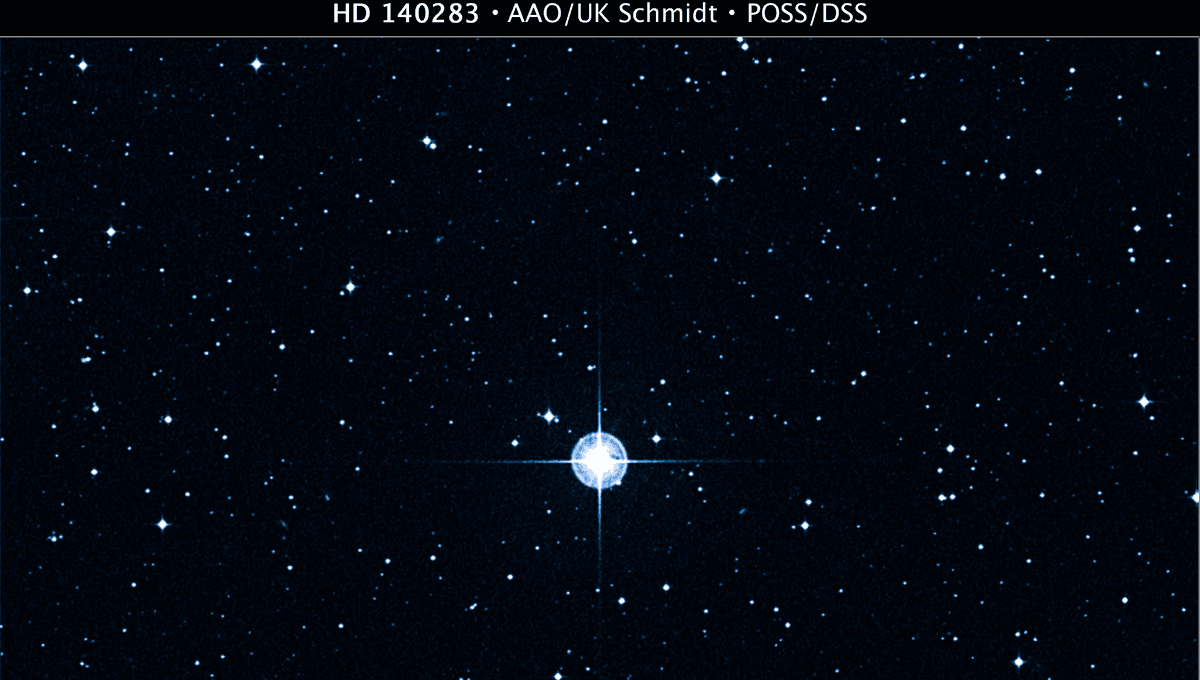
The star HD 140283 has been called the “Methuselah star” for its extreme age. At an estimated over 14 billion years old, it’s the oldest star we know, at least within our galaxy. A star that old is certainly interesting, particularly when it is so close to us it can be seen with binoculars, however, that appears to put it older than the universe. How that can be? A closer examination reveals the star is special, but not that special.
The standard estimate of the time since the Big Bang is 13.79 billion years. The figure is derived from the rate of expansion of the universe using Einstein’s relativity but has been validated through a variety of methods. However, that number is now facing at least three distinct challenges. As evidence, proponents point to the existence of stars estimated to be either older than 13.8 billion years, or so close to that age that there shouldn’t have been time for them to form.
Not surprisingly HD 140283 gets prime billing (helped by its catchy nickname derived from a Biblical ancestor of Noah said to have lived to 969) due to a 2013 study using Hubble data that estimated it is 14.46 years old, plus or minus 800 million years. That would make it potentially older than the universe.
The biggest claim regarding HD 140283 is that it disproves the Big Bang. After all, if there is even one star 14.5 billion years old then the explosion that started the universe couldn’t have happened less than 14 billion years ago. The Big Bang is now so central to our cosmology that were it to be disproved it would create a scientific revolution the like of which we have not seen for a long time.
A smaller, but still dramatic, change would be required to adapt to the recent claim that the Big Bang happened, but almost twice as long ago as most estimates put it, at 26.7 billion years ago.
Neither of these views has much support among astrophysicists, but some do suspect we’ve got our estimates of the timing of the Big Bang more modestly wrong, and the universe is really around 15 billion years old. Although such an estimate would raise a few questions about why our estimates for the universe’s expansion rate are out, if proven, accompanying changes to our thinking would be evolutionary not revolutionary.
In that context, it’s worth asking: if the universe was 26 billion years old, wouldn’t we expect to find 20 billion-year-old stars? It’s true we’ve only really looked across a small portion of the galaxy, but if the universe is that old, Methuselah looks suspiciously young. Then take that question a step further and ask what we might expect to see if the universe had no beginning and has always been here.
Outside our own Milky Way, stars in the globular cluster M92 are thought to be about 13.8 billion years old, and JWST has spotted some very distant galaxies whose age is still in dispute but nothing looks dramatically older than HD 140283.
“There are many, many measurements that suggest the age of the universe is about 14 billion years,” Professor Tamara Davis of the University of Queensland told IFLScience in regard to the 26 billion-year-old claim. “Not just the cosmic microwave background, not just the expansion rate measured using supernovas, there’s also the large-scale structure of the universe and the measured age of the oldest stars.”
Finally, there is the fact that our methods for estimating the ages of stars might be more reliable than the allegedly very long-lived 969 years for the Biblical Methuselah, but they’re far from definitive. A lot of possible sources of error don’t always get included in quoted error bars. HD 140283 is an outstanding example. In addition to the 14.46 billion estimate, another team produced ages of 13.7 billion and 12.2 billion years, depending on which estimate of its mass is correct. Yet another study concluded 12.0 is most likely.
Clearly, the last two values pose no threat to a 13.8 billion-year-old universe, and even 13.7 billion can be explained through the error bars.
Stellar ages are usually estimated using their absolute brightness and composition. The early universe contained nothing but hydrogen and helium. Most heavier elements were only formed from the deaths of the first generation of stars. The lower the concentration of these elements, the older the star is thought to be. This isn’t, however, a perfect method. Not only can we make mistakes in measurements, but the heavy metal products of the first supernovas may not have always mixed evenly. Other methods have been proposed, but are still being validated.
Consequently, while no one doubts the Methuselah star is very old and offers insight into the early universe, two out of three estimates pose no challenge to the age of the universe at all.
Even if the 14.46 billion year figure is correct, a slightly older universe is a far more plausible explanation than one that formed 13 billion years earlier than thought, or had no beginning at all.
Source Link: Is The Oldest Known Star Really Older Than The Universe?